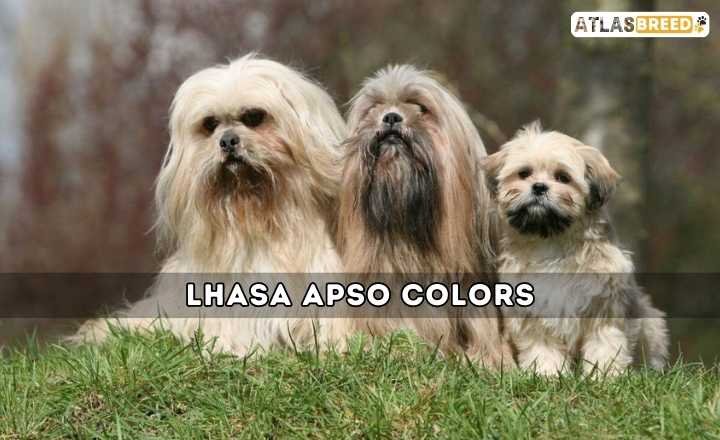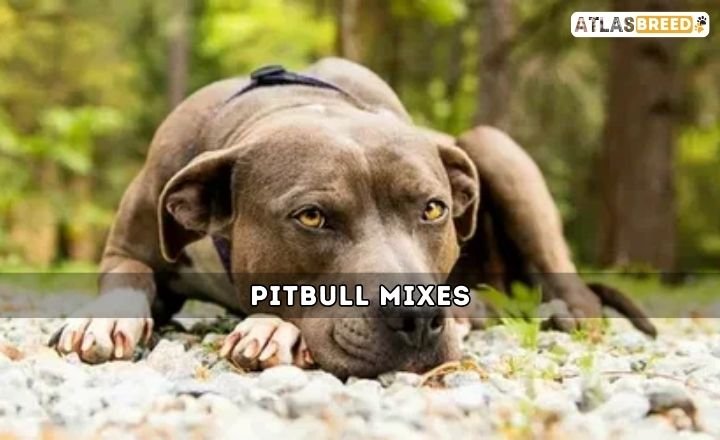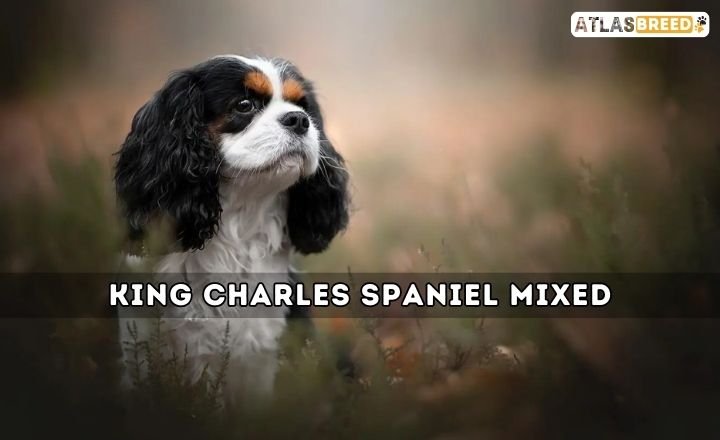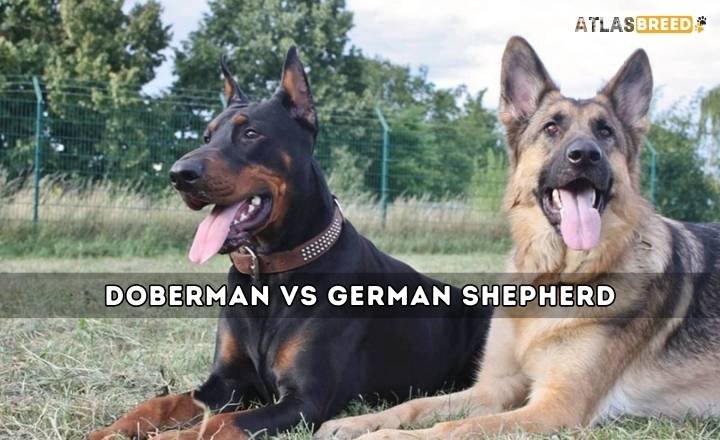The Lhasa Apso is one of the oldest dog breeds in the world, steeped in rich history and decorated with various colors. “It was valued by Buddhist monks and Dalai Lama centuries ago.
These little dogs have not only captured hearts but also found their way into Hollywood’s elite circles. Stars like Ellen DeGeneres, Elizabeth Taylor, Dolly Parton, and Jane Lynch are among the huge fans of this adorable breed that boasts charm, personality, and a striking array of 13 unique Lhasa Apso Colors.
Standard Coat Colors
The fascinating world of Lhasa Apso coat colors showcases the complicated dance of genetics that brings each pup’s hue to life. While some might imagine an endless array of combinations, only eight coat colors meet the American Kennel Club (AKC) standards for this beloved breed.
These officially recognized shades—ranging from gold and cream to dark grizzle—are not just a feast for the eyes; they also play a significant role in competitive events like conformation shows, where guidelines to breed standards can make all the difference.
Black Lhasa Apso
The Black and Tan Lhasa Apso is strikingly similar to popular breeds like the Doberman, particularly in its coat colors. With a robust black base coat enhanced by the signature tan markings widespread in Dobermans, these little canines showcase tan accents on their chest, legs, muzzle, face, and even eyebrows.

Black Lhasa Apso dogs are similar to Black chow chow breeds. Such patterns are often subtle at first glance, especially when considering the long-term growth of their luxurious fur; the abundant hair might obscure distinctive features that typically stand out in shorter-coated breeds.
Black And Tan Lhasa Apso
The Black and Tan Lhasa Apso is a striking variation of this breed, characterized by its black base coat and tan markings. These markings, similar to the common colors found in Dobermans and Rottweilers, are usually seen on the chest, legs, muzzle, face, and eyebrows.
Due to their long hair, the tan markings may not be immediately noticeable, making it easy to overlook their similarities at first glance. Some pups may have white spots on their stomach, chest, or feet, which can obscure the tan and create confusion with solid black Lhasa Apsos. The Black and Tan Lhasa Apso is a unique and beautiful addition to the most common Lhasa Apso colors.
Golden Lhasa Apso
The Golden Lhasa Apso stands out not just for its striking coat but also for its charming personality. This unique color variation of soft, shimmering gold ranges from a light golden hue to a warm wheat shade, often inviting comparisons to the plush coats of Golden Retrievers.
The colors may resonate with those famous Golden Retrievers; they embody their own essence, playful yet dignified. Owners of these little gold-coated treasures often find themselves entranced by their deep, soulful eyes set against a backdrop of cascading fur.
The Red Lhasa Apso
The Red Lhasa Apso is a stunning sight, radiating elegance and warmth with its various shades that can range from deep bronze to almost mahogany. Mistaken for brown puppies, these vibrant dogs embody a rich hue that evokes the enchanting colors of autumn leaves.

This color possesses depth and character, making each dog distinct; some may even carry subtle lighter highlights throughout their luxurious coat. When one considers a red Lhasa Apso, they invest in more than just a pet—they’re welcoming an exquisite companion steeped in beauty.
Red Gold Lhasa Apso
The Red Gold Lhasa Apso is a striking example of this breed’s diverse color palette, characterized by its luxurious long coat that seems to glimmer under the sunlight. At first glance, one might mistake their coat for a simple ginger hue;
Upon closer inspection, it reveals an intricate dance of a vibrant red base interspersed with shimmering golden hairs. This captivating interplay not only adds depth to the pup’s appearance but truly sets them apart in any canine gathering.
Cream Lhasa Apso
The Cream Lhasa Apso has carved out a significant niche in the hearts of dog lovers worldwide. They can surprise new owners with white markings that add a charming touch to their coats. Some might mistake them for solid-colored dogs, but closer inspection reveals delicate shades and patterns that showcase their uniqueness.
The subtleties in their coloring can vary widely; particularly intriguing is how certain individuals may display faint black hairs around their muzzles or facial areas, providing an unexpected contrast and enhancing their distinctive appeal.
Grizzle Lhasa Apso
The Grizzle Lhasa Apso is a true gem among dog breeds, showcasing a coat color that’s as intricate as it is unique. Unlike many dogs whose coats boast straightforward patterns, the grizzled appearance of these pups features an enchanting mix of colors intertwined throughout their fur.

A tapestry is woven with strands of black, gray, white, tan, and even cream—each hue creating a mesmerizing blend that changes in light and angle. This complexity not only makes grooming sessions entertaining but also presents an exquisite challenge for owners trying to identify and manage each color.
White Lhasa Apso
Among the stunning array of Lhasa Apso colors, the solid white variety stands out as a rare and enchanting gem for dog enthusiasts. This striking hue, often accentuated by subtle warm undertones, is not only visually captivating but also serves as a reminder of the genetic intricacies that shape our beloved breeds.
With many dogs across various breeds sporting an impressive palette of colors, few achieve the immaculate charm of the white Lhasa Apso. this coloration comes with fascinating nuances; while some may exhibit barely noticeable darker shading—a testament to their unique genetic makeup—they are still considered part-colored in certain contexts.
Non-standard Coat Colors
Non-standard coat colors stir debate among breeders and dog enthusiasts alike. While the American Kennel Club (AKC) recognizes a few standard hues such as gold and cream many captivating shades, like chocolate or merle, fall outside this accepted palette.
These intriguing variations often arise from complex genetics, stemming from dogs that may have mixed lineage several generations back. Interestingly, while these non-standard colors are not explicitly prohibited by kennel clubs, they remain overlooked due to associations with potential health concerns.
Blue Lhasa Apso
Blue Lhasa Apso is primarily characterized by a diluted black coat that showcases a cold gray shade with subtle bluish tints. This unique color results from a specific gene that alters the black pigment in the dog’s body, including its skin and even delicate features like the nose and eye rims.
A truly blue Lhasa Apso will often sport striking dark blue eyes and distinctively colored paw pads – features that set them apart as rare gems within this breed.
Charcoal Lhasa Apso
Charcoal stands out as a particularly rare and striking shade. This solid-colored coat, often presenting in deep hues reminiscent of slate gray, captivates dog lovers with its unique elegance. It’s important to note that charcoals aren’t merely traditional black or gray variations.

They come from distinct genes that contribute to their fascinating appearance, like Chocolate Sable Pomerania. This genetic distinction serves aesthetic purposes and fuels discussions about breed standards and desired qualities in show dogs versus family pets.
Gray Lhasa Apso
The gray Lhasa Apso, often overlooked as an undesirable color variation, brings a unique charm that deserves appreciation. These puppies can closely resemble their charcoal counterparts, with coats that transition from deep black to a stunning lighter shade of gray.
The enchanting allure of this change lies not only in its aesthetic appeal but also in the surprise it holds for new owners who may be unprepared for the transformation.
Liver Lhasa Apso
Liver color variant sparks both fascination and controversy among dog enthusiasts. Unlike the more recognized solid colors, liver Lhasa Apsos often showcase intriguing patterns with white markings that add depth to their appearance.
The dilution genes affecting this hue create a complex interplay in their coloration that can lead to undesirability in some circles particularly when considering show standards. Colors dilute, producing shades like chocolate or even deep red, which complicates breed purity but captivates those who appreciate unique aesthetics.

Silver Lhasa Apso
Among the 13 Lhasa Apso colors that enchant dog lovers, the undesirable silver Lhasa Apso stands out for its distinctive charm. Unlike typical gray or charcoal-coated pups, silver Lhasas boast an elegant light gray undercoat complemented by a lustrous topcoat that can come in various shades. This unique combination not only differentiates them from other breeds but emphasizes their exclusive pedigree within the dog world.
Lhasa Apso Markings
When it comes to Lhasa Apso coat colors, enthusiasts are often fascinated by the wide array of patterns and shades available. While most puppies tend to display some type of markings, solid-colored Apsos are extremely rare, making them a unique find for dedicated breeders and dog lovers alike.
White Markings
White markings on Lhasa Apsos are a delightful aspect of their diverse appearance, adding personality and charm to this beloved breed. In fact, these markings can appear alongside any base color, resulting in unique patterns that are both visually striking and endearing.
The most common locations for white markings include the dog’s chest, muzzle, and the tips of their tails. These features not only enhance their beauty but also serve as a subtle indicator of individuality within each pup’s lineage.
Black Mask
Exploring the unique aesthetics of small dog breeds, the black mask pattern stands out as a captivating feature that adds depth to their appearance. The lustrous black hairs gracefully cover the muzzle and chin, with some dogs showcasing this striking element extending all the way up to their eyes. This creates an intriguing contrast against their often vibrant body colors, enhancing not only visual appeal but also accentuating expressions that can be both regal and playful.
Sable
Sable is often misunderstood in the world of dog coats, particularly when it comes to Lhasa Apsos. Unlike traditional patterns that showcase distinct color variations across the dog’s body, sable refers specifically to a two-colored hair type where the individual hairs are dark-tipped yet may feature lighter bases like cream or gold. This unique trait adds depth and dimension to the coat, making it visually stunning without overshadowing the breed’s inherent charm.
Black Tips
Black tips are a fascinating aspect of the Lhasa Apso breed, often stirring confusion with their sable markings. These striking features may appear as mere embellishments to the untrained eye, but they hold a deeper significance in the dog’s expression and overall aesthetic. Typically found on a dog’s face, ears, and tails, black tips create an intriguing juxtaposition against the backdrop of the breed’s diverse color palette.
Parti-color
The parti-color pattern in Lhasa Apsos is a delightful variation that charms dog lovers with its unique blend of hues. This eye-catching coat comprises two or more colors, generally distributed in a way that creates striking contrasts.
Creamy shades are indeed prevalent among this breed, the beauty of parti-color lies in its ability to grace Lhasa Apsos of all colors. Whether you encounter one adorned in deep browns paired with hints of gold or a striking mix of black and white, each dog’s appearance becomes a canvas showcasing nature’s artistry.
Brindle
The brindle Lhasa Apso stands out among the dog breeds, captivating enthusiasts with its unique tiger-like stripes. While brindle is a common coloration in American Bullies, it remains quite rare within the Lhasa Apso breed, making these dogs a fascinating find for dog lovers.
The stripes typically emerge on a base coat of gold or cream, showcased beautifully against their long-haired features. This striking pattern invites admiration and curiosity but can also present challenges; with such distinctive markings, it’s not uncommon for them to be overlooked in favor of more traditional colors.
Conclusion
The diverse array of Lhasa Apso colors adds to the charm and uniqueness of this beloved breed. From the rich hues of gold to the striking contrasts of black and white, each color tells a story that reflects the breed’s ancient heritage.
We should celebrate these beautiful colors while promoting responsible breeding practices that prioritize health and temperament over appearance. Embrace the beauty of this remarkable breed by considering adopting or supporting Lhasa Apso rescues in your community.
FAQ’s
Is Lhasa Apso a lucky dog?
In Tibetan culture, the Lhasa Apso is regarded as a symbol of good luck and protection, often seen as a spiritual guardian.
What is the rarest color of Lhasa Apso?
The rarest color of a Lhasa Apso is blue, which is very uncommon and sought after.
What coat does a Lhasa Apso have?
A Lhasa Apso has a long, dense, double coat that provides insulation and protection.
Will my Lhasa Apso change color?
Yes, Lhasa Apsos often change color as they mature, especially during their transition from puppyhood to adulthood.






